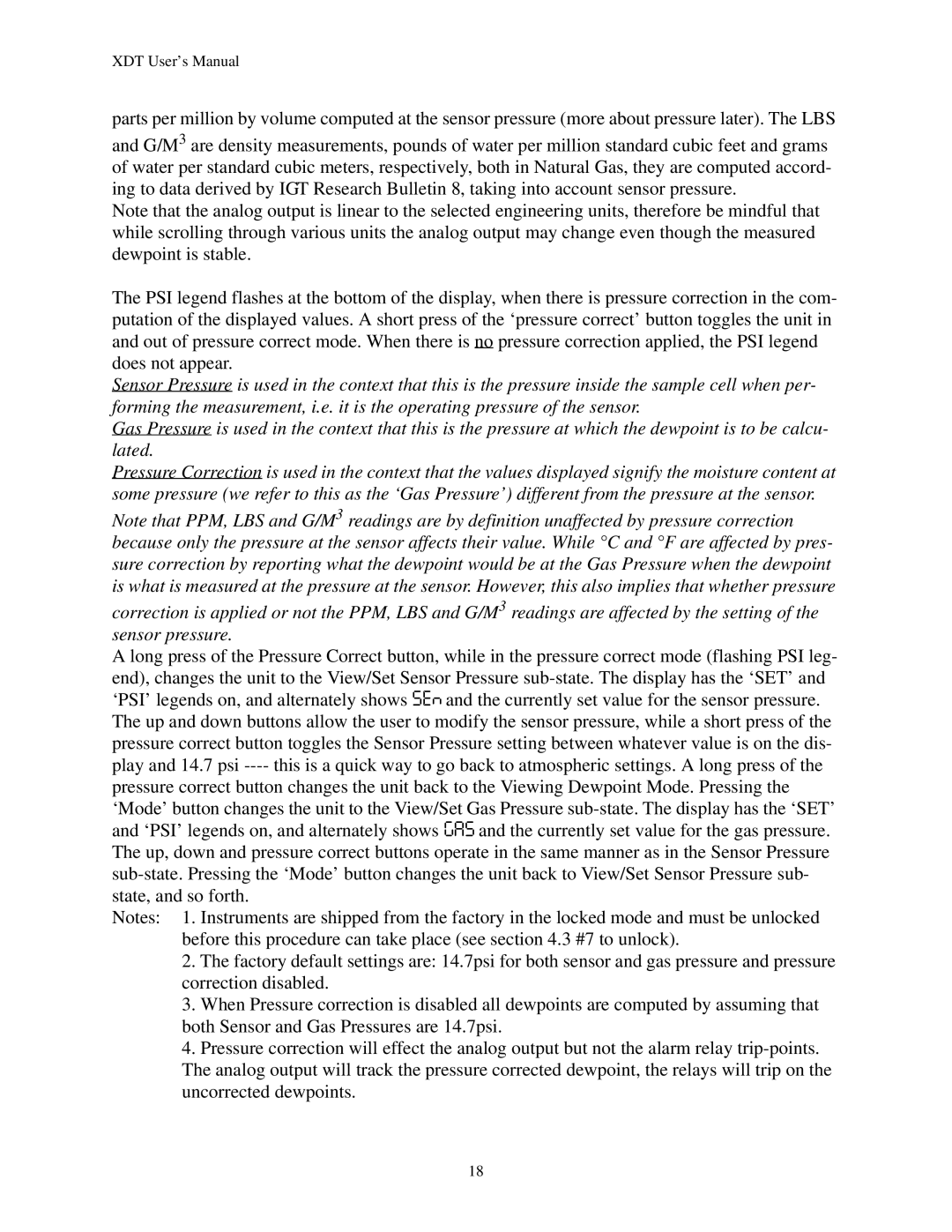XDT User’s Manual
parts per million by volume computed at the sensor pressure (more about pressure later). The LBS
and G/M3 are density measurements, pounds of water per million standard cubic feet and grams of water per standard cubic meters, respectively, both in Natural Gas, they are computed accord- ing to data derived by IGT Research Bulletin 8, taking into account sensor pressure.
Note that the analog output is linear to the selected engineering units, therefore be mindful that while scrolling through various units the analog output may change even though the measured dewpoint is stable.
The PSI legend flashes at the bottom of the display, when there is pressure correction in the com- putation of the displayed values. A short press of the ‘pressure correct’ button toggles the unit in and out of pressure correct mode. When there is no pressure correction applied, the PSI legend does not appear.
Sensor Pressure is used in the context that this is the pressure inside the sample cell when per- forming the measurement, i.e. it is the operating pressure of the sensor.
Gas Pressure is used in the context that this is the pressure at which the dewpoint is to be calcu- lated.
Pressure Correction is used in the context that the values displayed signify the moisture content at some pressure (we refer to this as the ‘Gas Pressure’) different from the pressure at the sensor.
Note that PPM, LBS and G/M3 readings are by definition unaffected by pressure correction because only the pressure at the sensor affects their value. While °C and °F are affected by pres- sure correction by reporting what the dewpoint would be at the Gas Pressure when the dewpoint is what is measured at the pressure at the sensor. However, this also implies that whether pressure
correction is applied or not the PPM, LBS and G/M3 readings are affected by the setting of the sensor pressure.
A long press of the Pressure Correct button, while in the pressure correct mode (flashing PSI leg- end), changes the unit to the View/Set Sensor Pressure
pressure correct button changes the unit back to the Viewing Dewpoint Mode. Pressing the ‘Mode’ button changes the unit to the View/Set Gas Pressure
Notes: 1. Instruments are shipped from the factory in the locked mode and must be unlocked before this procedure can take place (see section 4.3 #7 to unlock).
2.The factory default settings are: 14.7psi for both sensor and gas pressure and pressure correction disabled.
3.When Pressure correction is disabled all dewpoints are computed by assuming that both Sensor and Gas Pressures are 14.7psi.
4.Pressure correction will effect the analog output but not the alarm relay
18
